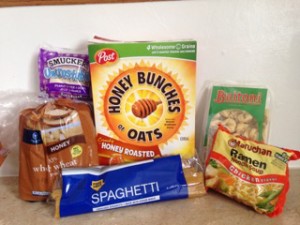 Wheat, flour, barley, and rye. Those who are gluten free know these are the basic ingredients that contain the protein, gluten, in breads, cereals, pastas, desserts and processed foods today. However, even the most unexpected foods and non-food items can contain traces of gluten from tea to envelopes! Read on to learn about hidden gluten.
Wheat, flour, barley, and rye. Those who are gluten free know these are the basic ingredients that contain the protein, gluten, in breads, cereals, pastas, desserts and processed foods today. However, even the most unexpected foods and non-food items can contain traces of gluten from tea to envelopes! Read on to learn about hidden gluten.
The first step in detecting gluten is knowing and understanding other names for gluten. “Natural flavors” in teas or other drinks and ingredients like brown rice syrup, malt, spelt, semolina, imitation meats in sushi or salads, canned soup, salad dressings, and soy sauce are NOT gluten free. Soups and salad dressings are sometimes thickened with flour.
“Dextrin” is another common ingredient in processed foods. Depending on its origin, “dextrin” could be derived from any grain, mostly corn or wheat. It is important to determine the source: fortunately in the United States, when wheat is the source of a starch it must say so. “Dextrose”, a form of sugar IS gluten free.
Non-food items that contain gluten include envelopes, some types of makeup, certain medications, and even play-dough! The glue in envelopes and some other adhesive products contains gluten. The best approach to this is to ask your doctor which medications are gluten free and to call the manufacturers of food and non-food items to reassure that you are buying strictly gluten free products.
Keep in mind that even if the long list of all of the hard-to-pronounce ingredients on a food package are gluten free, it is probably not the healthiest! Stick to basic ingredients and whole foods like fresh fruits, vegetables, and protein sources. Overall, it is always wise to disregard using or consuming products questionably containing gluten to avoid symptom flare ups!
Thanks to guest blogger Callie Carioti, Nutrition & Dietetics student at Miami University for contributing this post!
